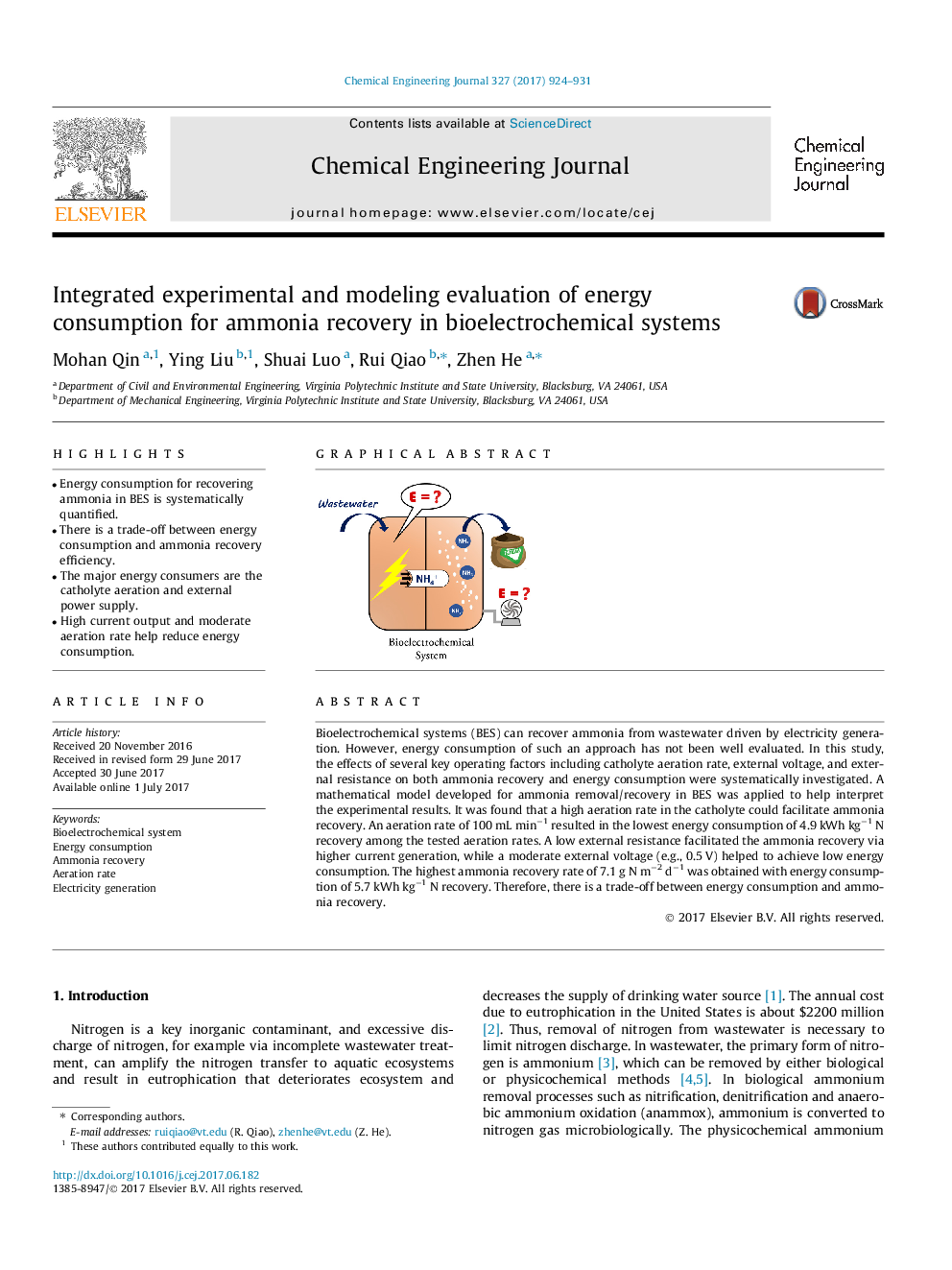| Article ID | Journal | Published Year | Pages | File Type |
|---|---|---|---|---|
| 6465101 | Chemical Engineering Journal | 2017 | 8 Pages |
â¢Energy consumption for recovering ammonia in BES is systematically quantified.â¢There is a trade-off between energy consumption and ammonia recovery efficiency.â¢The major energy consumers are the catholyte aeration and external power supply.â¢High current output and moderate aeration rate help reduce energy consumption.
Bioelectrochemical systems (BES) can recover ammonia from wastewater driven by electricity generation. However, energy consumption of such an approach has not been well evaluated. In this study, the effects of several key operating factors including catholyte aeration rate, external voltage, and external resistance on both ammonia recovery and energy consumption were systematically investigated. A mathematical model developed for ammonia removal/recovery in BES was applied to help interpret the experimental results. It was found that a high aeration rate in the catholyte could facilitate ammonia recovery. An aeration rate of 100 mL minâ1 resulted in the lowest energy consumption of 4.9 kWh kgâ1 N recovery among the tested aeration rates. A low external resistance facilitated the ammonia recovery via higher current generation, while a moderate external voltage (e.g., 0.5 V) helped to achieve low energy consumption. The highest ammonia recovery rate of 7.1 g N mâ2 dâ1 was obtained with energy consumption of 5.7 kWh kgâ1 N recovery. Therefore, there is a trade-off between energy consumption and ammonia recovery.
Graphical abstractDownload high-res image (55KB)Download full-size image
